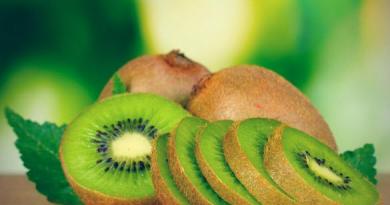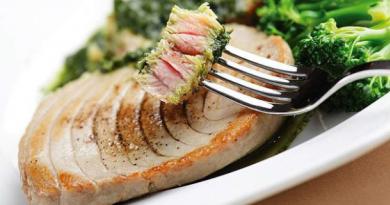Pike is a freshwater fish of the pike family. This is an extremely voracious predator that feeds on minnows, roach, and its own young. The habitat of the pike is the fresh waters of North America and Eurasia. It occurs in the Taganrog Bay of the Azov Sea, the Curonian, Riga, and Finnish Gulfs of the Baltic Sea.
Pike meat is dietary, contains 84 calories per 100 grams of product and is a natural source of phosphorus, potassium, iodine, zinc, fluorine, calcium, vitamins A, E, C, PP, B, antioxidants.
Fish is rich in protein, which is much easier to digest than bovine protein, and therefore is of particular value to people with digestive problems. In addition, pike strengthens the immune system, reduces the likelihood of developing cardiac arrhythmia. Rolls, dumplings, cutlets are made from fish fillets. It is served fried, boiled, baked, stuffed, salted, dried.
To preserve the taste and smell, fresh pike is cooked immediately after the catch, it must not be frozen.
The following varieties of fish are distinguished: common, Amur, masking, striped, redfin.
Description of the species
The body of the pike is torpedo-shaped, elongated, laterally compressed. The color is variable, depending on the habitat, vegetation in the reservoir and is gray-brown, gray-yellow, gray-green with olive spots on the sides, which create transverse stripes. Paired fins are orange, unpaired fins are brown with dark patches or yellowish-gray. The scales are small, thin. The head is large, the mouth is strongly elongated and slightly flattened. The lower jaw articulates with the skull, protrudes forward, the upper one extends beyond the vertical of the anterior margins of the eyes. Numerous strong teeth. The gill membranes are not fused to each other and to the intergill space. Thanks to this, the pike is able to swallow very large prey. Its length can reach 1.5 meters, and its weight is 35 kilograms. Usually in catches, these parameters do not exceed 1 meter and 12 kilograms, respectively.
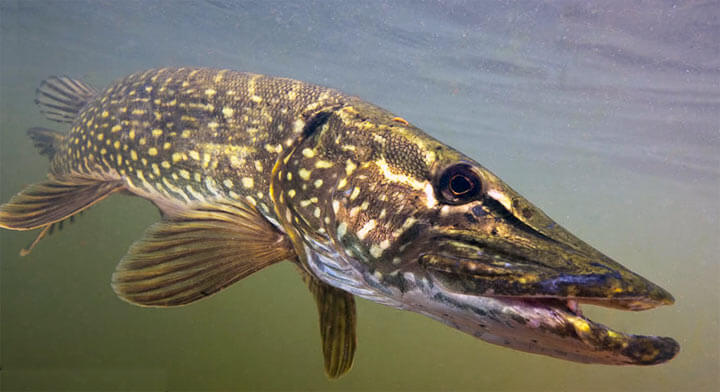 The life expectancy of an individual is 12 - 15 years. In the bays of the Baltic Sea and in the deltaic regions of rivers with a rich food base, the length of the fish by the beginning of the second year of life is 25 centimeters, and in the northern waters, depleted in food, it does not exceed 12 centimeters.
The life expectancy of an individual is 12 - 15 years. In the bays of the Baltic Sea and in the deltaic regions of rivers with a rich food base, the length of the fish by the beginning of the second year of life is 25 centimeters, and in the northern waters, depleted in food, it does not exceed 12 centimeters.
In the first months of life, juveniles feed on zooplankton, then gradually begin to lead a predatory lifestyle. Pike prey: cyprinids, perch fish, mammals caught in the water (moles, mice), waterfowl and chicks, frogs, tadpoles, molting crayfish. It is characterized by cannibalism: small individuals of their own family make up 20% of the predator's diet. No wonder the pike acquired the nickname "river robber".
Before reaching 50 centimeters in length, the fish lives in the thicket zone near the river bank, and after the onset of puberty (in the 3rd year of life) and an increase in size, it goes deep into lakes and reservoirs.
Pike spawns in early spring in the coastal shallow zone immediately after the ice has melted, at a depth of 20 centimeters. The water temperature during this period barely reaches 6 degrees above zero. Fertility varies from 3,000 to 233,000 eggs. The offspring develops rapidly: 14 days after spawning, a larva hatches, which feeds on the yolk sac for the first week, and then on plankton.
Chemical composition
Due to the hardness and abundance of bones, pike meat is considered third-rate. However, a masterpiece of European cuisine is prepared from it - the Gefilte Fish dish.
The energy ratio B: W: Y in the edible part of the pike is 97% : 3% : 0%.
| Nutrient name | Nutrient content per 100 grams of product, milligrams |
|---|---|
| vitamins | |
| 3,5 | |
| 1,6 | |
| 0,7 | |
| 0,2 | |
| 0,14 | |
| 0,11 | |
| 0,01 | |
| 0,0088 | |
| 260 | |
| 210 | |
| 200 | |
| 60 | |
| 40 | |
| 40 | |
| 35 | |
| 1,0 | |
| 0,7 | |
| 0,11 | |
| 0,055 | |
| 0,05 | |
| 0,05 | |
| 0,025 | |
| 0,02 | |
| 0,006 | |
| 0,004 | |
Pike fillet is low-calorie and low-fat, so it can be safely included in the daily diet of overweight people without worrying that it will harm the figure.
Useful and harmful properties
Effect on the human body:
- promotes the breakdown of fats, proteins;
- improves the condition of the cardiovascular system, skin, mucous membranes of organs;
- does not overload the digestive tract;
- increases the body's resistance to colds, infectious diseases;
- regulates blood levels, reduces the likelihood of developing diabetes;
- "feeds" the thyroid gland;
- supplies the body with nutrients;
- prevents the occurrence of cardiac arrhythmias.
Can pike harm the human body?
Yes. In theory, a freshwater predator is able to attack in the water or cause poisoning. However, these options are considered unrealistic, since the fish prefers to go to depth, excluding a potential meeting with a person, and its meat is recognized as hypoallergenic and safe.
The only factor that you should pay attention to before buying a pike is the ecology of the aquatic predator trapping area. Any fish is prone to the accumulation of toxic harmful compounds that are dangerous to human health. Pike caught in a polluted reservoir can cause intoxication of the body, allergies, indigestion, and intestinal infections. These manifestations are accompanied by cramping pains in the abdomen, swollen lymph nodes, fever, weakness in the muscles, a feeling of heat in the face, chills, severe weakness, and a sharp decrease in blood pressure.
Do not buy fish of dubious quality. Buy only the product that inspires you with absolute confidence without the slightest fear.
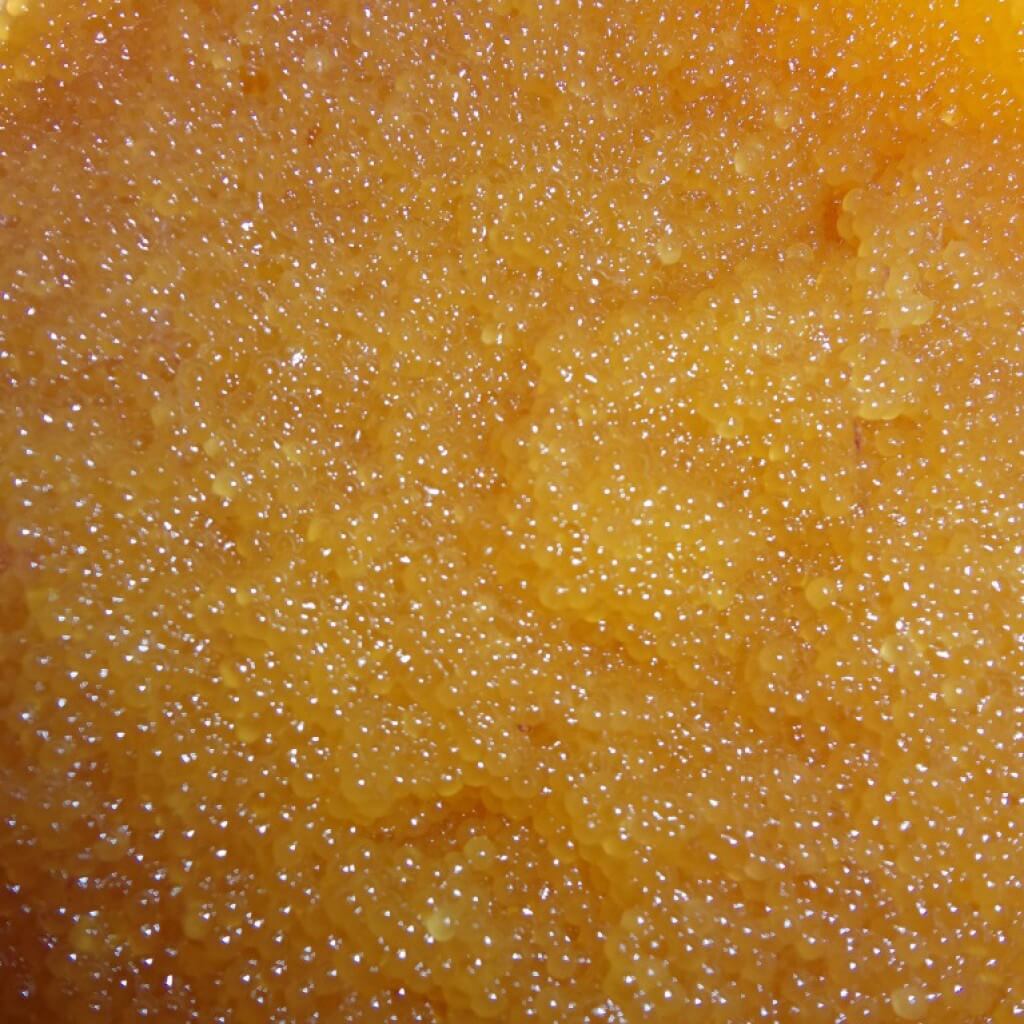 In terms of nutritional properties and taste parameters, pike caviar is in no way inferior to black caviar. At the same time, it is more dietary than sturgeon and salmon. In the old days in Russia, pike caviar was rightfully considered a royal treat. Due to the high cost, only nobles, monks and merchants could afford the product. In modern global cuisine, it has found wide application: pike caviar is served as an independent snack, accompanied by crackers or as a filling for tartlets, sandwiches. In addition, it is used to prepare assorted seafood, salad dressings and sauces for fish.
In terms of nutritional properties and taste parameters, pike caviar is in no way inferior to black caviar. At the same time, it is more dietary than sturgeon and salmon. In the old days in Russia, pike caviar was rightfully considered a royal treat. Due to the high cost, only nobles, monks and merchants could afford the product. In modern global cuisine, it has found wide application: pike caviar is served as an independent snack, accompanied by crackers or as a filling for tartlets, sandwiches. In addition, it is used to prepare assorted seafood, salad dressings and sauces for fish.
The energy value of pike caviar is 131 calories per 100 grams of product. The ratio B: W: U is equal to 87%: 13%: 0%. The offal contains iron, phosphorus, iodine, essential, easily digestible protein, vitamins A, C, B, D, ().
Useful properties of pike caviar:
- increases the level of hemoglobin;
- protects against atherosclerosis;
- improves blood circulation;
- normalizes pressure;
- strengthens the immune system;
- maintains visual acuity;
- saturates the body with vitamins, macro- and microelements;
- accelerates recovery after serious illnesses;
- enhances sexual function;
- protects the body from premature aging, prolongs youth;
- strengthens nails, hair follicles;
- accelerates cell regeneration, maintains skin elasticity.
In addition, pike caviar has a positive effect on the functioning of the nervous system and brain. Nutritionists recommend including offal in the daily diet of children, adolescents, pregnant women, people with increased mental and physical stress.
Salted pike caviar is contraindicated in hypertensive patients, babies under 3 years old and people with diseases of the digestive tract, cardiovascular system, kidneys, liver. During the period of exacerbation of chronic diseases, with gout, arthrosis, arthritis, individual intolerance, also refuse to eat snacks. Salted caviar retains fluid in the body, increases appetite, provokes overeating, and therefore is excluded from programs aimed at weight loss.
How to pickle pike caviar?
The sequence of preparation of the snack:
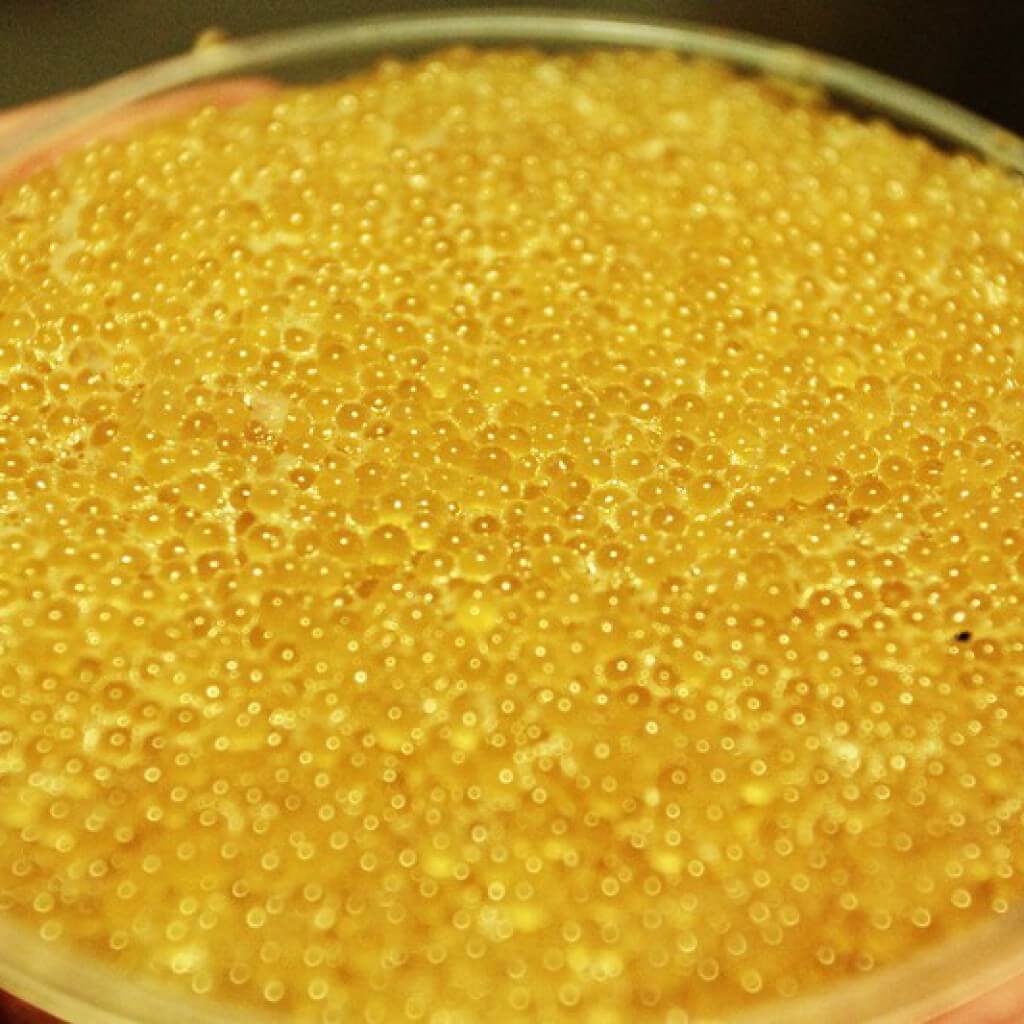
There are many recipes for salting pike caviar, one of them is fast, it involves infusing the delicacy in brine (under a steep brine) for an hour. To improve the taste of offal, in addition to salt, add olive oil, lemon juice, spices, onions.
Application in cooking
Pike meat is tough, dense, resilient and smells like mud, therefore it requires complex cooking to soften the fillet and drown out the specific flavor. To neutralize the unpleasant odor, place lemon slices inside the cleaned gutted carcass or soak it in a spicy (salty) brine.
Unlike small specimens, large individuals are a bit dry, therefore, to add juiciness, they are stewed with vegetables, stuffed with bacon. It is believed that the larger the weight of the fish, the tastier it is. The freshwater predator enters the store shelves in a chilled, canned, frozen form.
Due to the large number of bones, pike is less in demand than the tender meat of carp or salmon. However, with proper cooking, it will turn out to be a real delicacy that will not leave indifferent any fish gourmet.
How to cook pike?

For frying pike, use cumin, basil, saffron, black pepper, almonds. For the preparation of fish soups - fennel, cumin, bay leaf, rosemary, cloves. To enhance the piquant taste of grilled pike, mustard seeds, saffron, paprika, turmeric are suitable. For salting and cooking marinade, give preference to oregano, sage, allspice, tarragon, coriander, dill.
Experiment with spices, create your own sets of flavors. In the process of heat treatment, the spices will give a characteristic aroma to the pike, reveal and emphasize the taste of the dish.
Sauces and sauces for fish: hot mustard-honey, cold sour cream, mushroom, walnut, bechamel, Tatar, seafood, with almond milk, creamy.
Harmonious combinations with pike:
- Pork with lard.
- Chanterelles).
- Lemons and.
- , nutmeg, walnut capers.
- Horseradish.
- Eggs.
- Tomatoes, corn, potatoes, onions, carrots.
- Sour cream, mayonnaise, butter.
- Leek, parsley, leaves.
- Red wine.
- Olive and sunflower oil.
- Red pepper, bay leaf.
Pike meat does not have a pronounced taste, so in the process of its preparation, you can use both spicy oriental seasonings and “soft” European herbs. Fish dishes are served hot immediately after cooking, covered with the resulting sauce.
Pike fishing by season
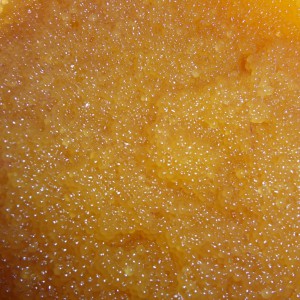 Fishing is an exciting activity for every second man in the world. For most of them, this is not just a pleasant pastime, but a hobby to which they devote day and night.
Fishing is an exciting activity for every second man in the world. For most of them, this is not just a pleasant pastime, but a hobby to which they devote day and night.
Pike is a coveted fishing trophy. It is active throughout the year and is found everywhere in fresh water. Unlike other species of fish, pike do not hibernate.
Caught on a hook, a river predator behaves violently: rests its tail on the water, makes sharp jerks, shakes its head, takes a vertical position in order to get out of the trap. If these maneuvers do not help, the pike becomes head down, burrowing into strong, thick grass, from where it becomes problematic to pull it out. As a result, the fish often breaks off the hook, goes under water. Due to sudden movements, one can never foresee how a strong and nimble predator will behave. From her jerks, hooks break, forests burst, which are able to withstand even the pressure of taimen.
Pike biting depends on the time of year and the type of bait. Active fishing for large fish falls on September-October, the main season falls on August. In the last month of summer, pike everywhere bite on any bait. The golden period for winter ice fishing is March.
It is believed that the most delicious pike is an individual that has reached 3 years of age. It is stewed, fried, boiled, dried. Small fish are used for cooking fish soup, and large fish are used for stuffing.
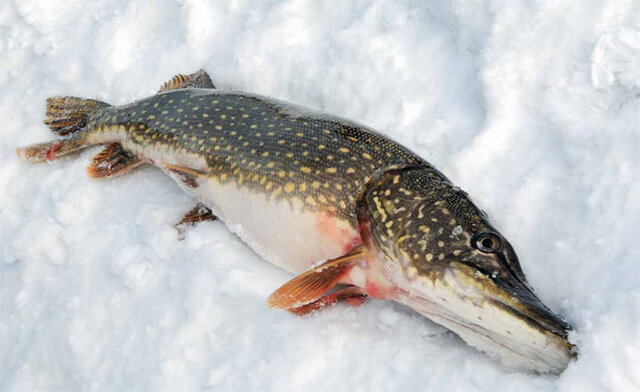 In the cold season, the fish is active and moves in search of food; it does not tend to freeze at depth. The best biting in winter is observed on a thaw, the first and last ice, in cloudy weather. Fish accumulation places are the confluence of streams, springs, where the water temperature is higher than in the reservoir itself. In addition, the pike rises from the depths to the surface, where gaps appear on the ice, and the snow begins to melt.
In the cold season, the fish is active and moves in search of food; it does not tend to freeze at depth. The best biting in winter is observed on a thaw, the first and last ice, in cloudy weather. Fish accumulation places are the confluence of streams, springs, where the water temperature is higher than in the reservoir itself. In addition, the pike rises from the depths to the surface, where gaps appear on the ice, and the snow begins to melt.
"Pike" places are considered: the territory near dams below the spillway or at steep banks, old rivers, deep reaches, factories, creeks.
In the middle of winter, during the period of severe frosts, the pike clogs into the pit and is difficult to stir. At this time, the main thing is to correctly cast the bait and move it slowly. It is recommended to use jig wiring.
When the last ice melts, the pike prepares for spawning and is especially hungry during this period. In order not to frighten off prey, keep silence while fishing and take care of darkening the hole.
Remember, the pike reacts sensitively to sound vibrations, it is easy to frighten it away.
Pike fishing in spring
The activity of fish increases with the release of the reservoir from ice. In spring (April), pike immediately go to spawn. Places of laying eggs from year to year remain the same. During this period, it is better to catch fish on the way to spawning grounds: near thickets of reeds, snags, driftwood.
In early-mid March, pike bite on spinning. During (and immediately after) spawning, take a break to catch fish. During this period, she sluggishly reacts to any bait. After 1 - 2 weeks, the pike begins post-spawning zhor, which lasts 14 days. This is a fertile period for anglers, as fish are caught in large numbers, day and night, with all kinds of baits.
pike fishing in summer
With the onset of heat, the activity of the pike decreases, because of this, the effectiveness of fishing decreases. In summer, large specimens remain at a depth, and only small fish, weighing up to 1 kilogram, peck.
The main feeding places are thickets of vegetation near the coast, the borders of pits or dumps, near branches leaning over the water, growing water lilies, islands of grasses floating on the pond.
In the warm season, the catch of pike depends on the depth of bait diving, the type of wiring, bait and the seasonal "mood" of the fish. It happens that she does not bite at her usual time or sorts out nozzles. With the onset of coolness, the efficiency of fishing increases, the predator begins to eat intensively.
Pike fishing in autumn
September-November are the best months for pike fishing. During this period, she actively pecks at all kinds of baits, replenishing energy reserves, which are intensively consumed on cold winter days. In autumn, the fish lives near the summer camps, and only a significant cooling makes it move into the deeper layers of the reservoir after the fish that serves as its prey. For pike fishing, pick up large lures and strong tackle, because in October the probability of catching a “serious trophy” is much higher than in June.
It is interesting that the pits in which it was possible to catch one fish in the summer are “clogged” with two or three well-fed specimens in the fall.
Thus, pike is a cunning, wayward fish. In the spring, she has a post-spawning zhor. During this period, you can catch pike in large numbers, but most likely it will be small individuals up to one and a half kilograms. In the summer, she is very fickle: either she behaves sluggishly, does not react to her favorite bait, or she pecks at any bait with amazing greed. In autumn, the fish becomes energetic, begins to swallow food well, falling on the hook. At the same time, it actively fights for survival, putting up stubborn resistance. In autumn and winter it is caught every day well, but it comes out late to hunt.
Bait and tackle
 Equipment for pike fishing:
Equipment for pike fishing:
- donks;
- spinners;
- spinning rods;
- fishing rods (float and live bait);
- mugs
- girders.
In calm waters with a slight current, it is easiest to fish with a float rod or spinning rod with a line diameter of 0.35 millimeters and a reinforced reel.
When biting, the pike emits strong shocks, gets tangled in grasses and algae, so the gear must be strong and powerful in order to hold the prey. In places with a lot of vegetation, where the main equipment is not suitable, girders are used. This is a cheap, convenient, easy way to hunt pike. In the case of using artificial bait, it is recommended to pull a nylon cord instead of fishing line. It is perfect for jig fishing for a freshwater predator or for a wobbler.
The most popular baits are spinners, jigsaws, twisters, silicone fish.
It is believed that the pike does not need special feeding. Attract smaller fish with breadcrumbs, porridge, oilcake and pike will come for it. However, if desired, a predator can be fed with offal of a bird, pieces of bleak, minnow, perch, roach, rudd, crucian carp, leeches, frogs, tadpoles.
Criterias of choice
Before buying a pike, smell it: it should smell like water and algae.
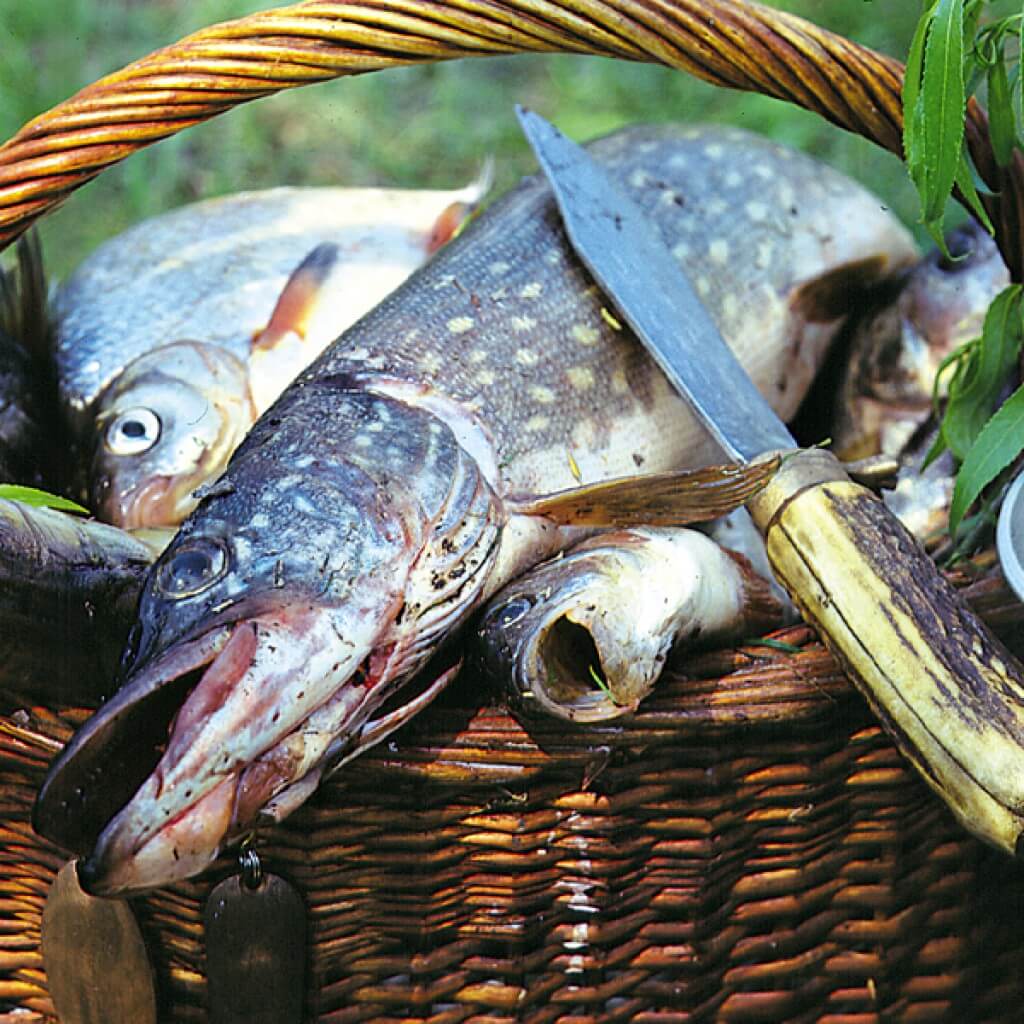 Fresh fish has:
Fresh fish has:
- bright red gills;
- dense surface;
- bright bulging eyes;
- shiny, moist scales without brown spots;
- straight tail without rounding.
The surface of a fresh carcass is covered with transparent mucus, the fillet is elastic, the fish looks like a living one.
When buying a chilled pike, press on the back, a non-disappearing hole indicates repeated freezing and thawing of the product.
Refuse to buy pickled fish, because in 90% of cases, low-quality fillets are hidden behind an abundance of spices. It is not recommended to purchase frozen pike, which partially loses its taste and smell after storage in the freezer.
Fresh fillet is stored in the refrigerator in an airtight package for no more than 3 days.
Output
Pike is a predatory solitary fish, widespread in the waters of the northern hemisphere. Habitat: flowing lakes, bays, oxbow lakes, slow-flowing rivers. The best biting periods are the thaw, 14 days after spawning (mid-April), September-October, when the fish intensively fills the stomach before wintering. Favorite bait - frogs, small squints, live bait (crucian carp, gudgeon, roach). Intensive biting is observed during daylight hours.
Pike is unusually useful for the human body, it is a storehouse of easily digestible protein, nutritious vitamins and minerals. Fish meat is low-calorie, low-fat, therefore it is indicated for people to strengthen immunity after suffering infectious diseases, improve heart function and the functional state of the gastrointestinal tract.
Pike fillet is a dietary product in a healthy diet. It is allowed to be used by children and people suffering from overweight (instead of meat). In folk medicine, offal, skin, bones and meat of fish are used to make medicines for eyesores, pain in the pancreas, jaundice.


